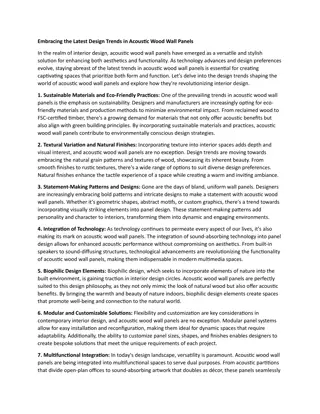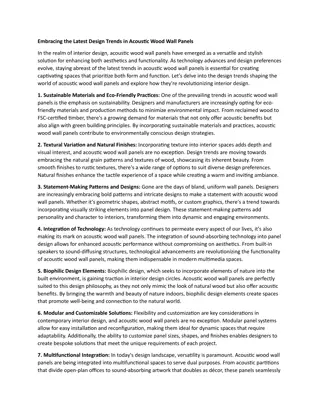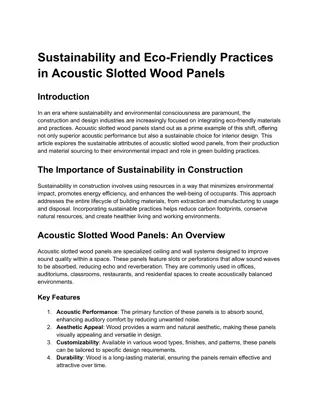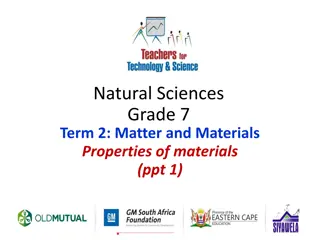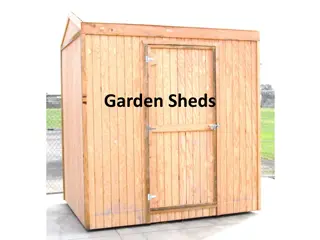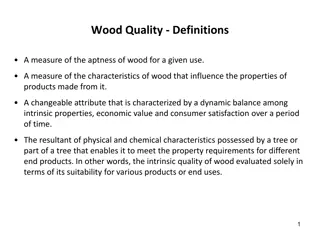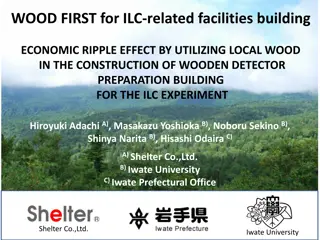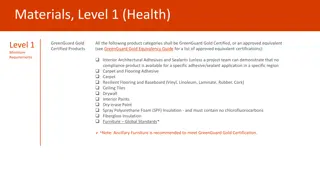Comprehensive Industrial Wood Construction Education Materials for 2022
Extensive teaching materials for industrial wood construction education in 2022, prepared by various educational institutions and industry experts. The materials cover topics such as construction economy, project management, and specialized knowledge on wood construction. Students will gain insights into project development, market dynamics, and essential tasks in construction projects. The course includes lectures, exercises, and a project focusing on wooden apartment blocks. Released under a Creative Commons license, the materials aim to enhance students' understanding of industrial wood construction practices.
Download Presentation

Please find below an Image/Link to download the presentation.
The content on the website is provided AS IS for your information and personal use only. It may not be sold, licensed, or shared on other websites without obtaining consent from the author.If you encounter any issues during the download, it is possible that the publisher has removed the file from their server.
You are allowed to download the files provided on this website for personal or commercial use, subject to the condition that they are used lawfully. All files are the property of their respective owners.
The content on the website is provided AS IS for your information and personal use only. It may not be sold, licensed, or shared on other websites without obtaining consent from the author.
E N D
Presentation Transcript
Industrial wood construction Teaching materials for industrial wood construction education 2022
2 Use of the materials Origin of the materials The materials are intended to be used as extensively as possible in industrial wood construction education and studies. These learning materials for industrial wood construction have been prepared in a project led by Puuinfo Oy in 2021 2022. Also involved in the project were The materials are released under the Creative Commons licence Attribution-ShareAlike (CC BY- SA), which requires that the author be properly credited when the materials are used and that derivative works may only be distributed under the same licence as the original work. Lappia Vocational College, TTS-Ty tehoseura ry South-Eastern Finland University of Applied Sciences, Metropolia University of Applied Sciences, Jyv skyl University of Applied Sciences, University of Tampere, and Federation of the Finnish Woodworking Industries Puutuoteteollisuus ry The original materials and any updates to them by Puuinfo will be published on the Library of Open Educational Resources website (aoe.fi) and the Puuinfo.fi website. The project was funded by the Ministry of the Environment.
Construction economy and project management
4 Authors Sauli Ylinen, Federation of the Finnish Woodworking Industries Puutuoteteollisuus ry Release date: 29/05/2022 Construction economy and project management
5 5 Construction economy and project management After completing the Construction economy and project management module, the student will Know the various operators and tasks involved in a construction project Know the main stages of a construction project Know the business models of key developers Know the most important model contracts in construction Know the most important project management tasks in a construction project Know the main features of the wood construction market Know the special features of a wooden house building project The course prepares the student for more advanced wood construction project development and project management studies Construction economy and project management
6 Contents Contents Five lectures Five weekly exercises Course project Practising preparing a project plan for an apartment block construction project The course materials focus on the special features of wood construction not all terms and basic concepts are extensively discussed in these materials The course materials use as examples two wooden apartment blocks implemented by TOAS Sr: the TOAS Kauppi and the TOAS Lumipuu. You can visit the project sites at: - Toas Kauppi, Kuntokatu 11 a, FI-33520 Tampere, FINLAND - Toas Lumipuu, Makkaraj rvenkatu 74, FI-33720 Tampere, FINLAND Construction economy and project management
8 Project development and law In this lecture you will: Learn about the impact of the construction regulations framework on wood construction Learn the principles of land use planning and land acquisition Get to know different developers and project models Learn about the parties involved in a construction project and the most important roles in the project Get to know the different legal ways of carrying out a construction project Become familiar with the most commonly used contract templates Learn to assess the risks and opportunities included in different contract models Learn to recognise the specificities of wood construction in relation to project development and legal issues Construction economy and project management
9 Construction regulations for wood construction Wood construction is governed by the same legislation as other construction. The following should be understood regardless of the material. Different levels of regulations and recommendations European legal framework MRL Land Use and Building Act and The National Building Code of Finland Decrees and guidelines of the Ministry of the Environment and various explanatory memorandums Other laws, such as the Housing Trade Act, the Sale of Goods Act or the Act on the Energy Certificate for Buildings Planning monopoly and different levels of planning Practices of building supervision authorities e.g. top-ten cards Land transfer terms and other separate agreements Standards e.g. the SFS-EN system Self-monitoring and industry practices, e.g. RT cards or the FISE system Legal practice Construction economy and project management
10 Construction regulations excerpts related to wood construction 1. Product verification CE, ETA, Verification certificate, site-specific approval? For example, there is no valid harmonised product standard for CLT No valid harmonised product standard for prefabricated box units Nationally, products can apply for Ministry of Environment's Verification certificate: https://ym.fi/en/verification-certificate For new products or products that have not been type-approved, qualification can be demonstrated by site-specific approval. Not the primary means Responsibility for demonstrating qualification always rests with the project promoter To be applied for and approved for each site separately The decision on approval is always made by the building supervision authority Construction economy and project management
11 Construction regulations excerpts related to wood construction 2. Planning and other municipal issues The municipality may require the local detailed plan to include wood construction if it wishes According to the SAC:2012:56 decision, this can be done https://www.kho.fi/fi/index/paatokset/vuosikirjapaatokset/1428403349476.html Infrastructure: Sprinkling is required in many wood building sites. This places demands on the water supply system, e.g. in terms of pressure and backup. The local detailed plan may specify a number of factors that affect the implementation method to be chosen Provisions on the implementation of the fa ade, e.g. whether the seam of a prefabricated unit can be visible Frame depths and placement of masses on the plot Parking solutions Storey heights and the number of storeys Roof shapes, fa ade design, balconies (e.g. the requirement for retracted balconies) Noise and vibration requirements on the plot 3. Designing and planning The number of designers already qualified is low in relation to traditional building methods For example: Approximately 700 concrete structure designers in FISE, approx. 100 wood structure designers (https://www.patevyyspalvelu.fi/registry) Construction economy and project management
12 Construction regulations excerpts related to wood construction 4. Optimum frame construction and regulations The regulations are one factor influencing which frame solution and implementation method can and should be chosen For example, fire codes allow different combinations for the number of visible surfaces or the use of sprinklers Functional fire dimensioning can be used to indicate design solutions that differ from the table on a site-by-site basis A good tool for early stage mapping is Puuinfo's Epuu service https://epuu.fi/ Construction economy and project management
13 Example of applying regulations Case Kauppi Selected implementation method is prefabricated CLT units Eight storeys Fire resistance rating P2 The regulations allow for a 20% rule that allows 20% of the load-bearing surfaces of apartments to be left as exposed wood The ceilings of the apartments were left exposed, showcasing the CLT surface The target is located in the helicopter noise zone Requirement for higher sound insulation in the fa ade Acoustician's report and solution for improving the sound insulation of the fa ade compared to the standard structure Functional dimensioning was utilised in stair wells Construction economy and project management
14 Different customers and project funding Approximately 40,000 apartments are built in Finland every year Currently, about 20% of these are ARA-subsidised. Non-subsidised properties are divided into rental housing owned by real estate investors and owner-occupied housing Different customers have different business and financing models Different contractual forms for different customers Main groups are further divided into different subgroups Construction economy and project management
15 Different customers and project funding Construction economy and project management
16 Ministry of the Environment's national objectives for wood construction Below are the Ministry of the Environment's national objectives of wood construction Julkisen-puurakentamisen-kansalliset-tavoitteet-45F5028E_8436_408A_8CD7_510C6C1AD000- 161609.pdf (ym.fi) Construction economy and project management
17 General principles of the Act on Public Contracts* The Act on Public Contracts must be applied to construction projects implemented by contracting entities. These include state, municipal and joint municipal authorities, state enterprises and public-law institutions and institutions governed by public law, and other comparable operators. Key principles of public procurement: Fairness For example, all potential bidders must be given the same competitive information throughout the process Non-discrimination For example, local requirements cannot be imposed and operators from all over the world must have a real ability to participate in the competition. Transparency For example, opening up the criteria for comparing tenders to all Proportionality The requirements presented must be reasonable. This has been applied, for example, so that too high turnover requirements may not be placed in competitive tendering. The Act on Public Procurement and Concession Contracts does not therefore preclude the submission of claims, as long as they comply with the spirit and principles of the Act. A wooden building can be tendered if these principles are followed The Act on Public Procurement and Concession Contracts does not apply to research and development services. This may in some cases be relevant when implementing innovative new solutions * Procurement Act = Act on Public Procurement and Concession Contracts (www.finlex.fi/fi/laki/ajantasa/2016/20161397) Construction economy and project management
18 Methods enabled by the Act on Public Procurement and Concession Contracts to require and promote wood construction in public activities Land use planning Wood construction can be specified in the local detailed plan and local detailed plan regulations for fa ades as well as in the building structure (SAC Record No. 2337/1/13) Land transfer Conditions may be imposed on the transfer concerning low-carbon construction or wood construction Tendering for procurement A requirement to use wood may be included in the contract notice as a minimum requirement for a tender. Reference and experience in wood construction as a requirement In quality scoring, e.g. the amount of visible wood surface or the carbon footprint of the building is taken into account Life cycle and externalities are taken into account when comparing overall cost-effectiveness Other rebates The developer may be granted a permit for minor deviations from the planning regulations, for example, in regards to fa ade and floor area The developer can be granted discounts on land use fees or land rents Construction economy and project management
19 Objectives of public procurement units Public operators may have many other objectives than the primary function and price of the target (e.g. building a school for children in the most affordable way) Various climate, indoor air and sustainability objectives and other strategic objectives set by society Business development, for example by implementing pilot projects Supporting other strategic objectives of the procurement unit Wood construction also affects other than the construction of the site itself Funding for green sites may be cheaper; for example green funding in municipal funding Development of new competence, performance and industry Produce jobs, often in industrial construction outside growth centres Self-sufficiency and security of supply The obligations laid down in the Act on Public Procurement and Concession Contracts must be fulfilled regardless of other objectives Construction economy and project management
20 Example: Tuupala School, Kuhmo (2017) The buyer (municipality) was responsible for the design of the site The chosen design solution was the CLT frame The contractor was put out to tender in an open competition The contractor selected a CLT supplier as its subcontractor It should be noted that the buyer did not require the use of a local CLT plant in the project; instead, the contractor can select the CLT supplier for the site as it sees fit. On the CLT plate, the subscriber wanted a spruce surfaces, which reduced the number of bidders and supported the selection of a local product. Image: Mikko Auerniitty Construction economy and project management
21 Example: Verkkosaari day care centre, Helsinki (2022) Competition conducted through a competitive negotiated procedure, no material requirements 1) Market dialogue for interested parties 2) Call for tender published in Hilma, minimum criteria for participation in the competition 3) Qualifying participants will receive a preliminary invitation to tender, on the basis of which an anonymous race proposal will be submitted 4) Three best proposals were selected and a round of negotiations was held. 5) Based on the feedback, three bidders submitted the final competition work and a binding offer 6) Criteria: price (50%) and quality with criteria 17% functional properties 17% architecture 15% technical properties and life cycle 7) The CLT proposal received the best points for price and quality. The proposal's architecture and use of space were considered particularly successful. The total price of the proposal was the lowest, even though the price per square metre was higher than that of the other proposals. 8) Places 2 and 3 were remunerated for their participation in the race Image: AFKS Construction economy and project management
22 Examples from Central Europe on public procurement and promotion of wood construction In France, the competitions are organised as an invitation competition The competition is drawn up to a very high level of detail, participation is remunerated Participants are selected through a candidate procedure the games are long and expensive to buy The final choice of winner is made on the basis of a political decision In Austria, social housing is supported by a separate funding system The ecological nature of the building is scored on the basis of the building permit images The subsidy is paid on the basis of scoring, the amount of the subsidy is 5 10% of the construction cost Financial institutions managing the subsidy as part of the funding process of the sites Construction economy and project management
23 Observations on wood construction Completed residential apartment block projects have focused on ARA production Municipal rental housing operators Student housing foundations Other parties producing affordable housing Traditionally, about 90% of single-family houses have wooden frames In public buildings, the market share of wood construction has increased in recent years For example, of schools with wooden buildings in 2019, wood market share approx. 31% The apartment blocks for sale have been made of wood, but they have not yet hit through extensively, with the exception of single-family and terraced houses. Wood construction is currently concentrated on developers who build their own sites on their own balance sheets. Construction economy and project management
24 Project parties, roles and responsibilities Key parties simplified model The party taking part in the construction project overall responsibility for everything, usually the customer Developer the party that implements and manages the project May be from your own organisation or purchased as a service as a developer consultant Contractor responsible for building the project Designer responsible for designing and planning the site User Authorities (e.g. planning, building supervision) In reality, there are many more different stakeholders, and even small projects can have dozens of parties. Typically, financing and the future owner of the property also play a significant role in the project. Different contract models share these roles in different ways. Construction economy and project management
25 On parties in wood construction sites As a rule, wood construction projects have the same parties as other projects Industrial manufacturing moves the work away from the site Selection of contract model emphasis on the role and competence of factory work The first wood-building site for many customers Favours contract models in which the supplier is responsible for the design and construction of the site Construction economy and project management
26 Implementation modes The customer can implement its project in many different ways here are some of the most common implementation models The customer has the site designed and planned, and then tenders the building contract The client hires the designers and tenders the implementation, for example, as a YSE-based overall contract Contracts with overall responsibility D&B (full responsibility) and D&C (design and construction) The implementer is responsible for both planning and implementation under one agreement Shared contract The customer tenders different parts as their own entities As a rule, the Customer is responsible for coordinating the whole Project management contract A separate project management organisation instead of the main contractor Collaborative models, e.g. Alliance Instead of price and content, risk and reward sharing is agreed (management system) The operators implement the project jointly and share the responsibilities The following is good to know Full price contract, invoice contract and target price contract Construction economy and project management
27 Implementation models in wood construction In industrial manufacturing, a larger part of the work is carried out outside the construction site A shared contract may aim to eliminate overlapping margins in implementation Requires resources and expertise from the customer Contract limit must be specified precisely For complex projects and for projects involving product development Alliance or other collaborative models may be a solution in projects where it is not known in advance what the best solution would be In the alliance model, the operating model is an "open book", which means that the customer is informed of the actual costs of the project D&B and D&C contracts are suitable as an implementation model when the customer organisation does not have enough resources or experience and the risk of implementation is to be transferred to the contractor. The reverse side of outsourcing the risk is usually a higher price Construction economy and project management
28 Example Case Kauppi and Lumipuu Lumipuu Customer's second wooden apartment block Need to link the operator to the development phase of the project A shared contract was selected as the contract model PU was put out to tender after the development phase KAUPPI Customer's first wooden apartment block Need to obtain information and accumulate competence Alliance model was chosen as the contract model Enabled an initial development phase in which the project was developed ARA-subsidised site The project reservation and partial decision phases must be taken into account in the schedule and in the production of the material ARA-subsidised site The project reservation and partial decision phases must be taken into account in the schedule and in the production of the material Key parties Customer, the party starting the project Main contractor, responsible for the site. Supplier of prefabricated box units, responsible for the delivery of prefabricated box units The customer, the contractor and the supplier of prefabricated box units formed an alliance. Designers. In addition to the usual, an acoustician and a fire technical designer for fire and sound issues. In addition to the customer's involvement in the construction, the involvement of maintenance in the project Key parties Customer, the party starting the project Main contractor, responsible for the site. Supplier of prefabricated box units, responsible for the delivery of prefabricated box units The customer was responsible for planning and implementing the shared contract Designers. In addition to the usual, an acoustician and a fire technical designer for fire and sound issues. In addition to the customer's involvement in the construction, the involvement of maintenance in the project Construction economy and project management
29 Contract terms Most common terms and conditions YSE General Terms of Contract for Construction the most used terms and conditions for contracts RYHT General terms of purchase and delivery of construction products. Typically used for deliveries of goods KSE General Terms and Conditions of Consultation the most common terms and conditions used for planning In wood construction, consideration is often given to whether manufacturers of prefabricated goods are subject to YSE or RYHT terms and conditions. In addition, the Housing Trade Act affects this The law is applicable to the object of sale and gives rise to contractual obligations protecting the buyers of apartments Construction economy and project management
30 Special features of wood construction Place where the work is actually carried out The starting point for the authorities and legislation is that construction takes place at the site For example, a general foreman must be named on the construction site, but not, for example, for the prefabricated box unit factory. The plant can still make 50% of the value of the project Factory manufacturing is carried out at the same time as the construction site Procurements are realised significantly earlier than when building on site To be taken into account in payment instalments Construction economy and project management
31 Special features of wood construction 2 Insurances Normally, the contracts require insurance for the construction site Normal liability insurance may not be sufficient if much of the value of the object is realised in the factory Discussion of insurance interfaces for all contract models Guarantees High value from product In many cases, the contract requires similar guarantees from the factory supplier during the construction and warranty period as from the building contractor. All normal terms and conditions in a contract must be reviewed through value generation and checked to ensure that the contract model matches the selected implementation method Construction economy and project management
32 H1 Weekly exercise: Project development and law 1. Go to the epuu service You are building a place with 6 storeys, it is 20 metres high and has 3,000 m2 floor area, and fits the homes of 50 people living there. There are stocks of movables in the house. www.epuu.fi 2nd Please enter a short three-part answer a) What fire regulations should you take into account in your project? b) What are your frame options for building the house? c) What alternative would you start developing for your own project and why with this source data? Construction economy and project management



